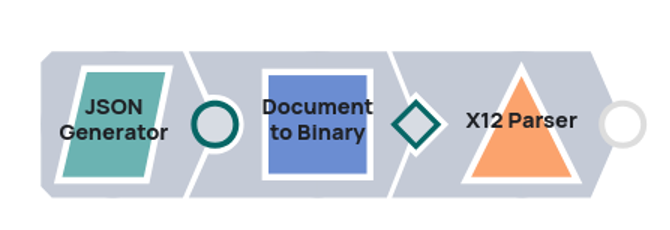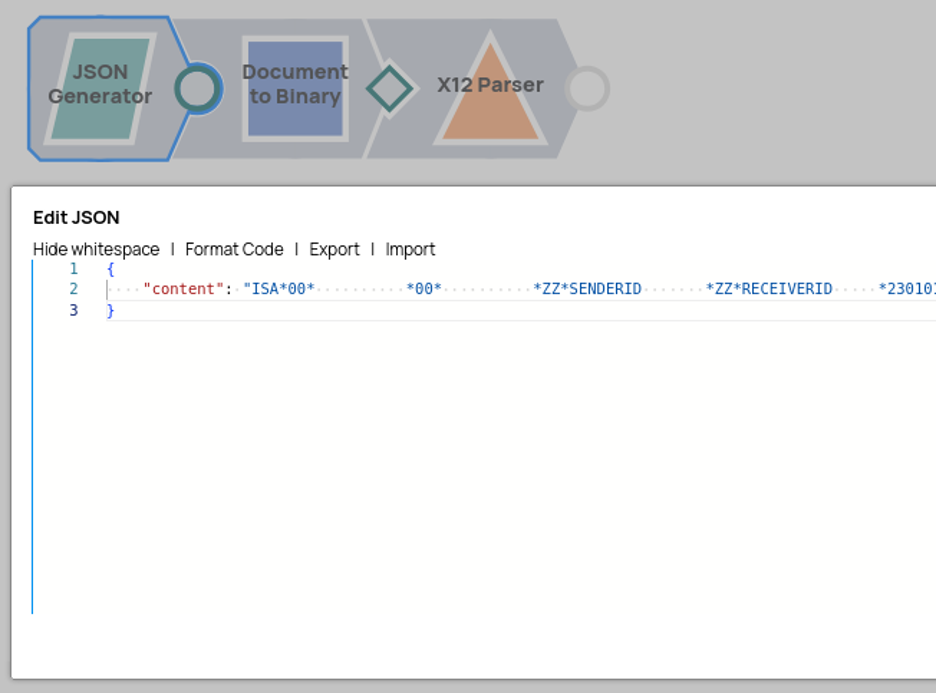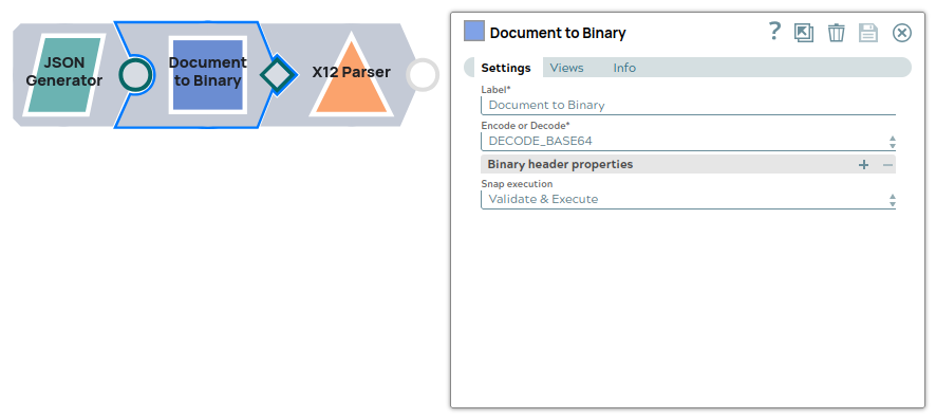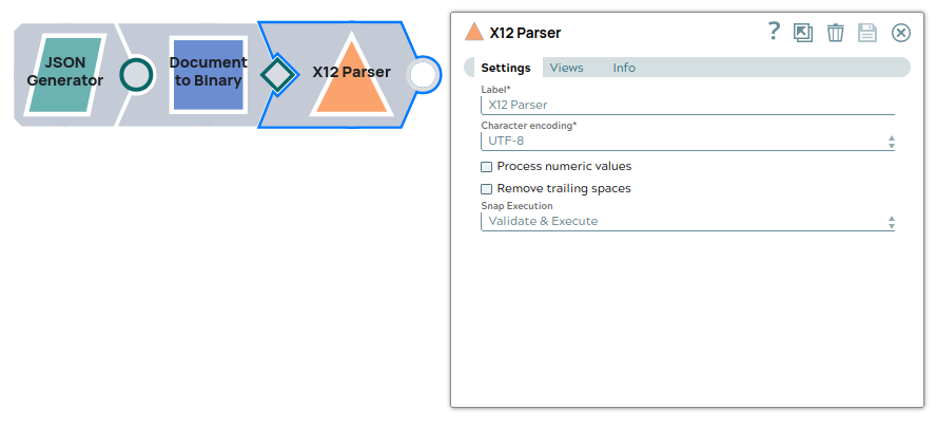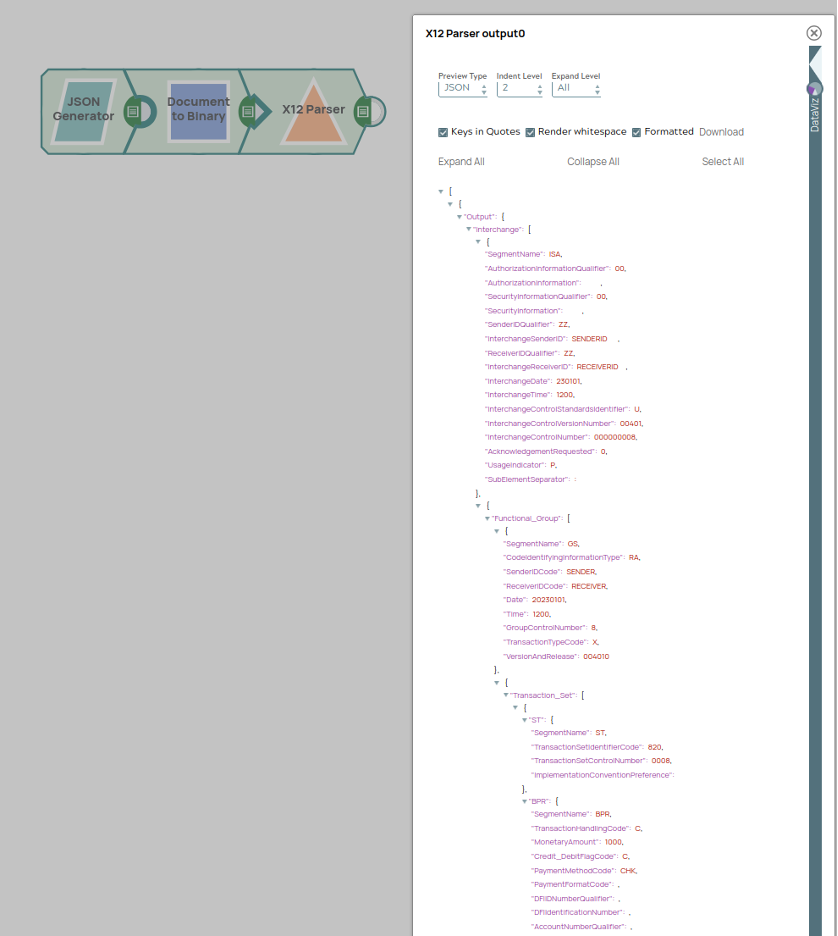The following example demonstrates a simple pipeline that generates X12
data, converts it to binary, and parses it into a JSON document:
Download this Pipeline
-
Configure the JSON Generator to produce a
document that contains the X12 data as a string:
Example input data: {
"content":"ISA*00* *00* *ZZ*SENDERID *ZZ*RECEIVERID *230101*1200*U*00401*000000008*0*P*:~GS*RA*SENDER*RECEIVER*20230101*1200*8*X*004010~ST*820*0008~BPR*C*1000*C*CHK************20230101~N1*BY*BUYER NAME~N1*PR*PAYER NAME~N1*PE*PAYEE NAME~SE*6*0008~GE*1*8~IEA*1*000000008~"
}
-
Use the Document to Binary Snap with its
default configuration to convert the string to a binary stream.
-
Similarly, the X12 Parser Snap uses its default
settings for this use case.
This pipeline outputs the X12 data as a JSON document:
This output can then be used as direct input for the X12 Formatter without mapping fields because it
contains an X12 Transaction_Set array.
To successfully reuse pipelines:
- Download and import the pipeline into SnapLogic.
- Configure Snap accounts as applicable.
- Provide pipeline parameters as applicable.
